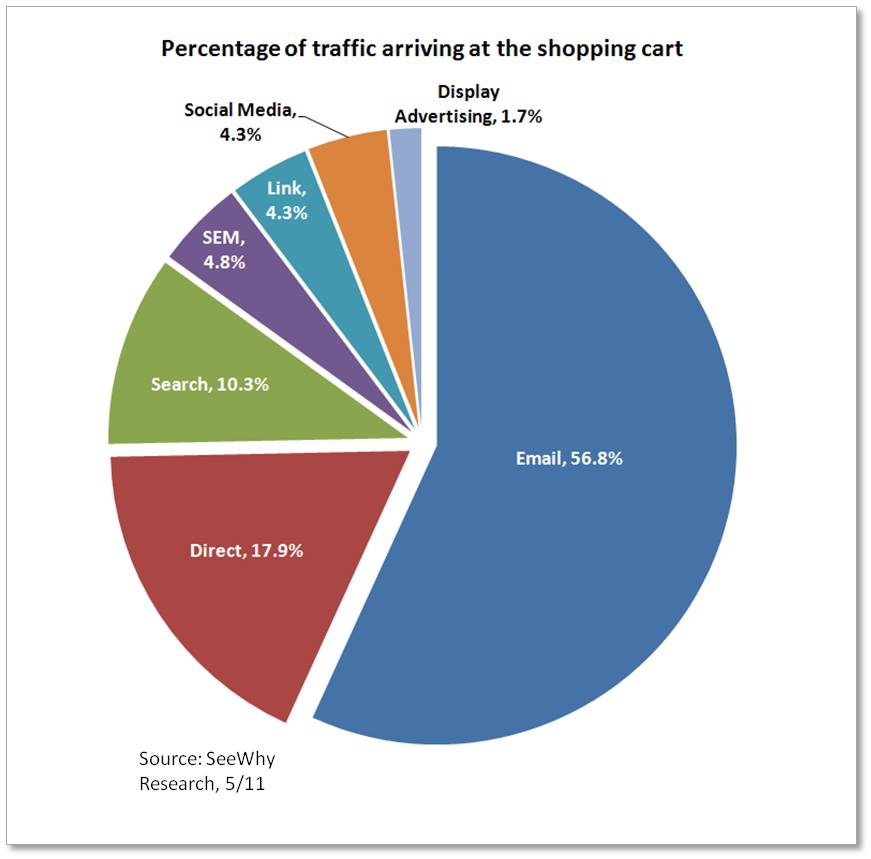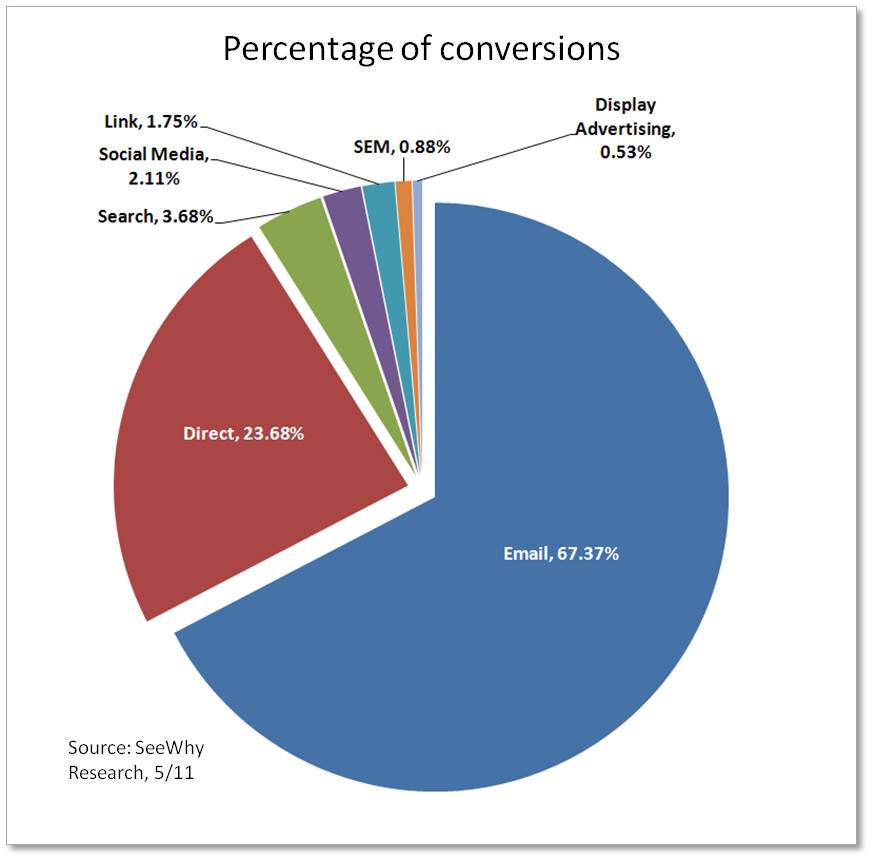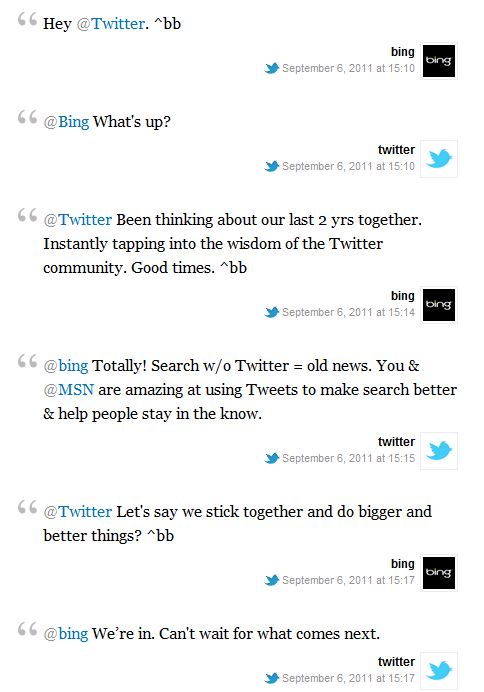A few months ago, See Why released a great piece of research on E-commerce conversion rates. They looked at the percentage of traffic various sources sent to the shopping carts of sites and the percentage of sales conversions generated by each source. These are important insights but there is much more to consider:
- What are your most valuable traffic sources?
- How would you go about figuring it out?
- What is last touch attribution and why can it be dangerous?
- What value has a repeat visit vs a new visit?
The See Why study looked not at what generates traffic but at what generates those valuable shopping cart views and which sources actually generate the most sales. Since e-commerce sites leak the vast bulk of their visitors, looking at what sells rather than what generates traffic is important.

Source: See Why

Source: See Why
Email marketing was the big winner in this analysis. That might surprise some people given that email is fairly old school and doesn’t get half the coverage other online channels do. It probably won’t surprise you if you actually run an e-commerce site and have spent a couple of years building and using your newsletter list. The stand out finding in this study is that email drives conversions. (We are presumably talking permission based email marketing and mostly made up of your own list here. Not spamming.)
Slight surprises in the study include the low percentage of conversions driven by Search Engine Marketing (paid ads) and the fact that they are outperformed by Social Media. This in no way fits with my experience of Internet marketing. SEM can be an excellent conversion channel and conversion rates from Social tend to be poor. Of course the results here will depend on the volume of visits being driven by each channel. If participants get a high percentage of visits from Social sources then they will account for a higher percentage of the site’s conversions.
How to Assess the Value of a Visit?
So how do we assess the value of a visit? It is plain that not all visits are equal. The See Why study assessed traffic sources in terms of which drive the most conversions. This is a really valuable way to look at things. If you just look at the surface though, you could make big mistakes. The temptation would be to plow resources into the channels that convert the highest. These are the most valuable, right? Diverting resources from less valuable channels to these more valuable channels should drive more conversions.
Last Touch Attribution Sucks!
Here is a little secret about analytics. Last touch attribution sucks. Google analytics and other platforms will typically be showing you last touch attributions. You’ve set up your site, installed your analytics code, gone to all the effort of tracking where your visitors are coming from, set-up goal tracking and broken down your conversions by traffic source. At this stage you are miles ahead of the average site owner but there is a danger that you can misinterpret what your report will tell you.
Last touch attribution tells you the last way that the visitor found your site. This is useful information but there is much more to making sound decisions than just knowing this.
All Visits are not Equal
 You can look at conversions in terms of a sales funnel where a large number of visitors enter the top of the funnel and go through some process. A small number of visitors come out the bottom of the funnel as conversions. What is important to realise is that this process often takes place across more than one visit.
You can look at conversions in terms of a sales funnel where a large number of visitors enter the top of the funnel and go through some process. A small number of visitors come out the bottom of the funnel as conversions. What is important to realise is that this process often takes place across more than one visit.
The two largest drivers of conversions in the See Why study are Email and Direct visits. These are rarely, if ever, first time visitors. To be on your email list, a visitor has already been at your site and signed up. On e-commerce sites they are often people who have purchased previously. Your email list is massively important because these people have come to your site before and liked what they see enough to sign-up or buy. They are pre-qualified. This makes your email list hugely valuable and if you are not using it to its full potential you should certainly look into it.
You should also ask yourself, where do these first contact visitors come from? How do I put them at ease and help them convert? (perhaps on this visit but potentially on a later one).
Email is a valuable traffic channel because it hits pre-qualified targets and can be a strong driver of conversions. Social can do the same thing to one degree or another. They are touch points with customers or prospects that allow you to continue to build trust and trust is important to conversions.
Search is a valuable traffic source because it is often the channel that opens the funnel. It is often where that first visit comes from. If you only look at last touch attribution, you miss the fact that without the first visit there is no second or third.
If the sales process takes place across more than one visit and requires a number of touch points, which it usually does, then watch out for the following:
You’ll have many conversions from channels with no direct cost
These might include:
- Email lists
- Direct visits
- Searches on or including your company or site name
- Social
There is an opportunity here.
- Can you get more people on your newsletter list?
- Can you give them more?
- Can you inspire trust?
- Can you call them to action?
- Is there more you can do to convert them?
- Are there offers that might trigger sales?
The same questions might be applied to your social media channels.
It is easy to understate the value of first visit channels
Many of your first visit channels cost. SEO, Search marketing etc. involve time, energy and money. When assessing your traffic sources, setting the cost of these channels against their direct return in terms of conversions will typically underestimate their long-term value.
When you analyse your most valuable traffic sources you will often find “free” sources as a strong driver of conversions. Just keep in mind that those first visits are important too. You have to fill the top of the funnel to get conversions out the bottom of it and your email list won’t deliver conversions if no-one signs up.











